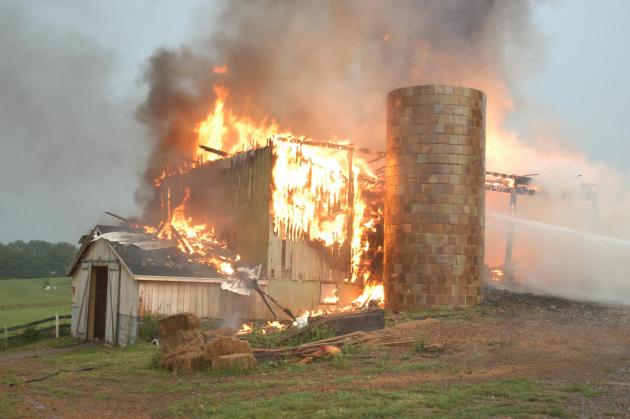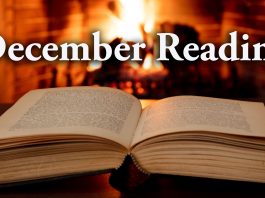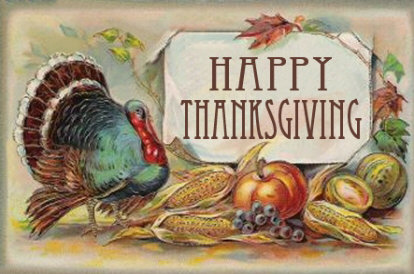

“Nothing can bring a farm to its knees in a single, decisive blow faster than a fire” says Michael Greenia, a member of the Vermont Barn Fire Prevention Task Force. In fact, he says that many farms never recover. Jenny Nelson agrees after seeing the loss of many barns and farms to fire over the last 30 years. Nelson, the agriculture policy adviser to Senator Bernie Sanders say, “You lose your barn, and you really think twice about whether you want to get back in farming.”
The difference between surviving a barn fire and closing up shop is often insurance.
When a fire destroyed their barn, the Boucher Family Farm in Highgate, Vermont lost feed, seed, fertilizer, two machine shops, and thousands of pounds of meat inventory, as well as 8 pigs and 5 calves. Thanks to three separate insurance policies, the farm will recover, but in the meantime, cheese making has been suspended, and without that and the weekly market trips to Burlington, their annual earnings will be halved. “We’ve had to stop everything,” says Dawn Boucher.
But buying insurance isn’t always an easy thing to do, especially when times are tight. Dan and Merri Paquin of Critter Meadows Farm chose to buy winter heating fuel over insurance for their organic dairy. Says Merri, “I just figured I could pause it and pick it back up after the winter and we would be OK.” But their barn burned down one winter night, taking with it all but 28 of their 117 cows along with the meat operation the ag inspector was days from signing off on.

Are you adequately insured?
Others farmers who are insured, find out after a barn fire that they are under-insured or that what they thought they had insured wasn’t in fact covered. That was the case for Bruce Hennessy and Beth Whiting of Maple Wind Farm. When they took over ownership of the Andrews Farm the insurance company based their coverage on the assessed value of the barn and property with the assumption that was the appropriate level. Says Beth, “Even if they had offered to double our coverage, I don’t know that we would have said yes. We were already pretty well extended at that point. The additional costs weren’t in our business plan.”
But then the barn caught fire one morning and burned to the ground. As they sorted through what they’d lost – all their vegetable cooling capacity, meat freezers, poultry processing and production equipment, vegetable production and washing tools and equipment, scales, computers; bathroom, office and retail facilities; well water infrastructure and vacuum pumps, and, of course, storage space – They realized they were woefully underinsured based on what it would take to replace everything they lost. Nor had their agent ever discussed inventory insurance with them, so they had nothing to cover the 10,000 lbs. of root vegetables and the frozen chickens and turkeys that were stored in the barn.
“Inventory insurance never even came up,” says Beth. “I assure you, it will in the future!”
Preventing barn fires
Insurance may help you recover, but prevention means you never have to try. With that in mind, here are some tips for making sure your barn is safe as we head into winter:
1. Have a No Smoking rule in and around barns.
2. Check electrical wiring. Look for fraying wires, indications of wear, or rodent damage. Have all new or suspect wiring inspected and approved by a licensed professional. Yeah, it costs money, but it’s better than the alternative!
3. Make sure that heaters of any kind are properly maintained and positioned so that they won’t cause fires.
For those of you kidding or lambing in cooler temperatures, here’s a handy tip from Sandra Miller for safely keeping young animals warm:
4. Keep grass mowed short for 30 feet around your barn so that if a fire starts elsewhere it has a harder time spreading to the barn.
5. Don’t weld, use propane torches, or BBQ near your barn.
6. Ask your local fire department to come out and take a look around. Another set of eyes can be very helpful when it comes to finding things that are potentially barn fire hazards. Plus, if the worst should happen, having visited your place once, firefighters will be able to find you more easily.
7. Invest in fire extinguishers and know how to properly place them and use them.
8. Install smoke detectors. You can even find detectors that will sound the alarm in the house.
9. Monitor stored hay for the early warning signs of spontaneous combustion. Watch for steam rising from bale surfaces and condensing on the roof and eves of the barn. Molds will begin to grow and you may notice an acrid, hot tobacco smell rising from the bales.
What do you do if you suspect that your hay is heating? Here are some recommendations from the Ontario Ministry of Agriculture, Food and Rural Affairs:
First of all, make yourself a simple probe that can be inserted into the hay mass to check the temperature. A probe can be made from a 10 foot piece of electrical tubing. Rivet a hardwood pointed dowel to one end and drill 8 – 3/16 inch diameter holes in the tube just above the dowel. Drive the probe into the hay mass and lower a candy thermometer on a long string into the probe. The thermometer should be left for 10 minutes to ensure an accurate reading.
Watch for the following temperatures:
150°F (65°C) ** Entering the Danger Zone. Check temperature daily.
160°F (70°C) ** Danger! Measure temperature every four hours and inspect mow.
175°F (80°C) ** Call the Fire Department! Wet hay down and remove from the barn.
185°F (85°C) ** Hot Spots and Pockets May be Expected. Flames will likely develop when heating hay comes in contact with the air.
212°F (100°C) Critical! Temperature rise is rapid above this point. Hay will almost certainly ignite.
Do not walk on top of bales that are heating. Pockets may have already burned out under the hay surface and walking on it could cause the hay to collapse and drop you into a fire pocket.
Have a Fire Evacuation Plan
When I was still living in Loveland, Colorado, a big windstorm knocked a tree down on the electrical lines running through our neighbor’s property and started a grass fire. They were gone at the time, so after calling 911, I immediately started on the plan I’d worked out in my head for what to do with pets and livestock in case of a fire. I ran to the neighbors and got their dog and put him in my house. Then I ran to my goats, put them on the leashes I had waiting by their pasture gate just for this purpose and led them to my chicken pen where they would be safe. Having thought about what to do ahead of time made it so much easier to do what needed to be done.
Likewise, if you have thought through what you can do in case of a fire emergency, you’ll be able to work faster and more safely. Start by having a meeting site for everyone on the farm so that you’ll know that everyone is safely out of the barn. Then shut off the power to the barn. If your driveway is hard to find, discuss beforehand with your family and employees who will wait by the road to guide fire trucks in.
Below are some tips for evacuating different livestock from barns, but the most important thing to remember when considering evacuation is YOUR SAFETY. If the barn’s roof is on fire, DON’T GO IN! It may collapse at anytime. If you are alone, don’t go into the barn. If something happens, no one will know where to find you. Finally, barns can fill with smoke very rapidly and if you go in, you could pass out from smoke inhalation. So protect yourselves before anything else.
Be safe and have a great winter!




